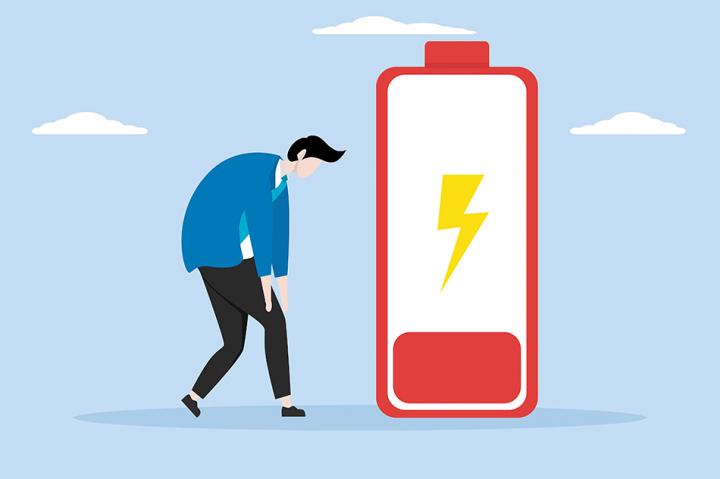Burning the candle at both ends: how can businesses beat employee burnout?

Thanks to technology, we can now work anywhere at any time, giving people more flexibility than ever and, in theory, helping create a healthy work/life balance. But being better connected can come at a price.
Global levels of burnout shot up during the COVID-19 pandemic, and this problem doesn’t seem to be going away any time soon.
What is burnout?
Picture this: you’re feeling exhausted at work, you feel that you lack purpose and achievement, and you can’t help but feel cynical about your work in general. What you’re experiencing is burnout.
Jason Wainwright, Muckle’s managing partner, has seen burnout throughout his career.: “The nature of our job as legal professionals means that we often work intensively, which creates greater potential for burnout. But it’s not a problem limited to the legal sector; anyone in any role or industry can suffer from it.”
How can it happen?
Burnout is traditionally associated with overwork, but other factors can include lack of job satisfaction, lack of clear responsibilities or even boredom. That’s right – boredom can result in burnout too (there’s even a term for it – “boreout”).
Remote/flexible working also has a part to play; recent research by Calm found that 58% of employees said that they’re always connected or available for work (1). Technology has created an “always available” culture and people find it much harder to switch off from work (figuratively and literally).
Certain personality types are also more susceptible to experiencing burnout. Jason understands this all too well: “People who work at law firms are generally very high-achieving and diligent individuals, as well as great perfectionists.
"Although these qualities are beneficial when it comes to delivering outstanding client service, they could contribute to burnout, especially when combined with the demanding nature of our sector”.
What’s the impact?
Although not a health condition itself, burnout is linked to a myriad of serious health conditions: mental (for example, depression and anxiety) and physical (such as cardiovascular diseases).
Burnout also creates serious problems for organisations, as well as individuals. One employee suffering from burnout can have a knock-on effect on a company’s productivity levels, culture and morale, and staff turnover.
This, in turn, can create greater stress levels and workloads for other colleagues. Before you know it, the cycle of burnout can start again if you don’t nip it in the bud.
What can organisations do?
Burnout isn’t something that happens quickly. It is sustained over a long period of time – weeks, months, sometimes years. That’s why prevention is key.
Jason thinks that creating an open company culture focused on wellbeing should be top of your list: “All employers should be as supportive and collaborative as possible, which starts with communication.
"Employers need to communicate the importance of a work/life balance, encouraging their people to prioritise self-care through simple gestures like taking their annual leave, not checking their emails during non-working hours, and spending their free time doing things they enjoy.
“Individuals do have their own part to play in preventing burnout, but this can only work in tandem with a supportive organisation. Employers must empower their people to advocate for themselves and set boundaries with colleagues and clients.
"There is still a stigma around mental health and people sometimes think that admitting they’re struggling is a sign of weakness, which is far from the truth. We need to change that!”
Your organisation might already be doing a lot to prevent burnout unknowingly. Jason believes that a little can go a long way: “In addition to annual leave, everyone at Muckle has two extra wellbeing days and two volunteering days a year.
"Both take our people away from work; the ad-hoc wellbeing days help our people rest and recharge when it’s really needed, whilst the volunteering days enable our people to feel a real sense of purpose and focus on something else they care about.
“However, without implementing cultural change, these kinds of perks can only temporarily solve the burnout problem without addressing the root causes. This brings us back to the importance of a supportive and open organisational culture.”
Duty of care
Although this article focuses on job burnout, it can happen outside the workplace (for example, students in full-time education).
Regardless of demographic, the symptoms, struggles and repercussions of burnout are the same for us all, and we all have a responsibility to look out for and help each other.
Visit our careers pages to learn more about Muckle’s supportive culture. You might even find a job posting that you want to apply for!
References:
1) Calm
